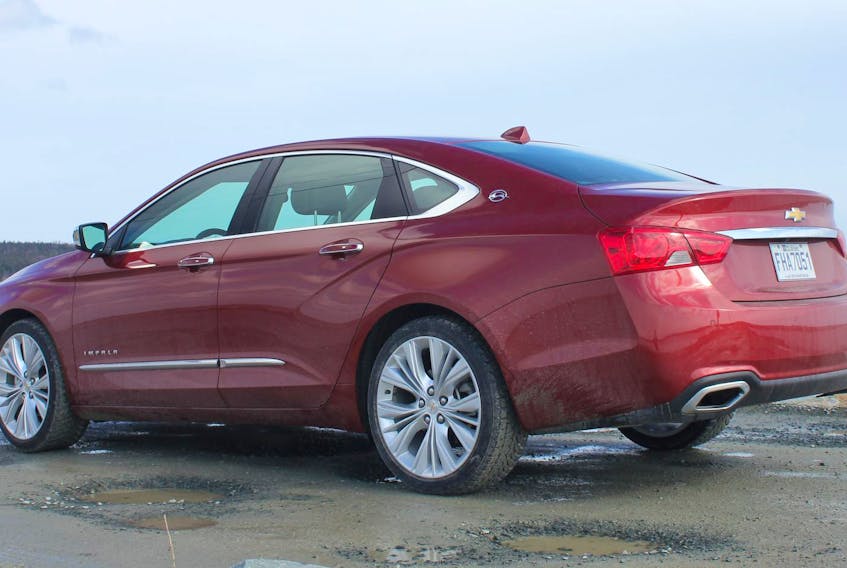When I was a kid, the back seat of our family vehicle was where I would find myself on road trips, amicably sharing the space with my older sister.
Singalongs were a big part of keeping us entertained while Dad got us down the road.
When my brother came along and was old enough to sit on his own, sometimes my sister and I fought over who would have to be my sleeping brother’s leaning post.
The back seat was suddenly more crowded.
Our parents did not rush out to buy a minivan though. They hadn’t been invented yet (boy I’m old!). Back then, to move one’s family around, it was the sedan, with its three-box design of engine, cabin and trunk, or that iconic symbol of family mobility, the station wagon.
The station wagon was a two-box design. One box for the engine and one very large box for the front and rear seats and a gargantuan cargo area with a hinged door to make access easier. This design didn’t increase seating space — well, unless the kids sat in the cargo area which of course was not safe but shhhh, don’t tell anyone that this was rampant in the 1970s.
The station wagon, or estate as it is also called, was named for its original purpose of transporting people and luggage between country estates and train stations.
The 1980s brought the minivan, which revolutionized the way families rolled. Everyone sat up higher in the minivan, sliding side doors meant kids and pets could hop in and out easily, a third row meant occupants could spread out and find their own place to lean while snoozing. But Mom and/or Dad probably didn’t feel very sexy or sporty while driving it.
Then came the sport utility and crossover vehicle craze which is still raging today. Raging so much in fact that the sedan is, and has been, on the demise.
Observers of the auto industry say the sun setting on the sedan started in 2015 when then-president of Fiat Chrysler, Sergio Marchionne, slashed the Chrysler 200 out of production. At the time he was considered a madman but he may go down in history as a genius.
In March of this year, production of the Ford Taurus will stop, followed by the Focus, the Fiesta and finally the Fusion, leaving only the Mustang in Ford’s car garage.
GM is ditching their Chevrolet Impala and Cadillac XTS.
Some manufacturers aren’t giving up on the sedan though and are probably hoping the world will not go too far in declaring the death of the car. Volkswagen’s Jetta is their number two seller and the 2020 Passat was just revealed in Detroit last month. Honda’s Civic and Accord continue to sell as do the Camry and the Corolla from Toyota, albeit with less sales in Canada in January of this year, compared to January 2018.
Nissan is still betting on good sales of their Altima and Maxima and Hyundai and Mazda certainly aren’t giving up their sedans.
The demise of the sedan from the Detroit Three gives other manufacturers an opportunity to capture customers who aren’t ready to give up their so-called dowdy dad car.
According to some analysts, sales of the sedan will also come from emerging car buyers, the upcoming generation of first-time car shoppers. The sedan, or passenger car, is simply a less expensive option than an SUV or crossover, and that’s not factoring in fuel prices.
In general, sales of SUVs and crossovers increase as gas prices decrease.
It’s no surprise the survival of the sedan has only a small sliver of hope when manufacturers have been marketing the SUV as the only vehicle choice for you, The Adventurer.
In 2015, crossover sport utility vehicles represented the world’s largest automotive segment, making up almost twenty-three per cent of global light vehicle sales and almost thirty-seven per cent of the planet’s passenger car market.
According to industry forecasts, in three years 73 per cent of all consumer vehicles in the U.S. are expected to be utility vehicles of some sort.
It’s hard to beat a crossover for ease of entry and egress, cargo-carrying competence and feeling of security and comfort in one’s seating position. Off-road capabilities are usually hyped as well with these vehicles but seldom employed by most utility vehicle drivers.
Like all things in the human world, the pendulum of time and taste swings back and forth with trends. Will the sedan go away completely? Will kids today and tomorrow never know the joy of sharing a cozy back seat with siblings?
Is this truly the sunset of the sedan? Perhaps it’s just taking a power snooze in the rest area of the highway of life.
Follow Lisa on Instagram: @FrontLady









